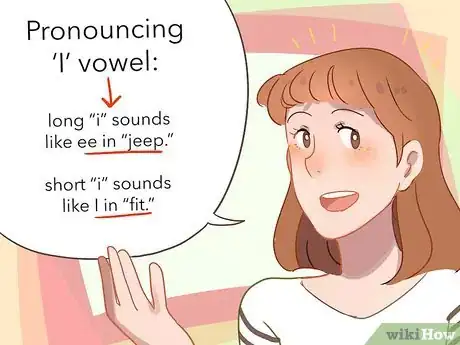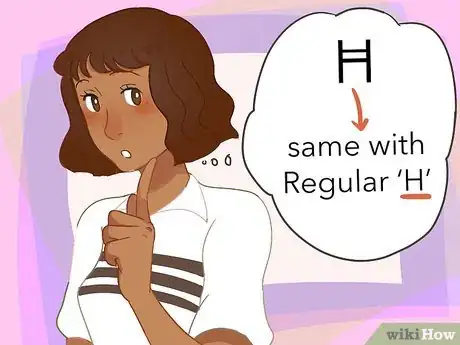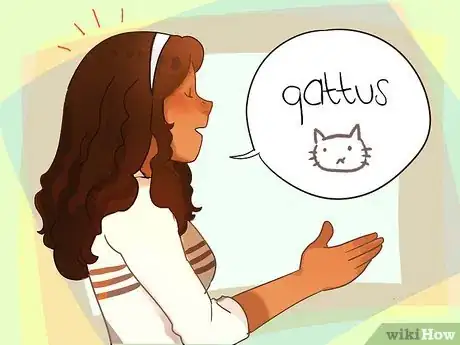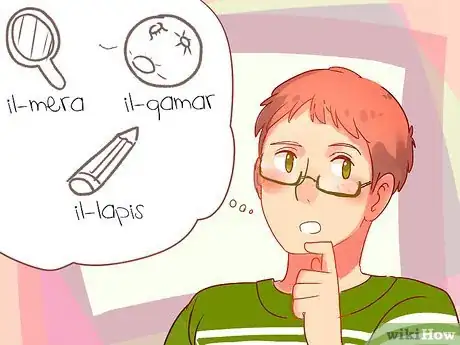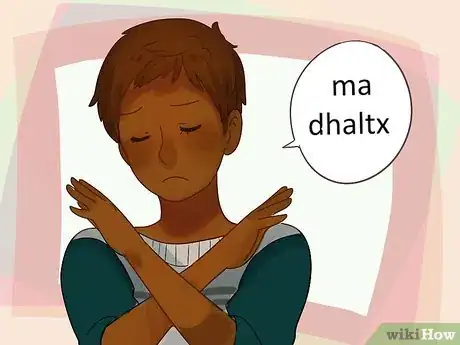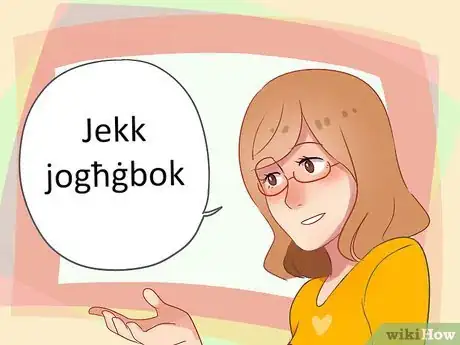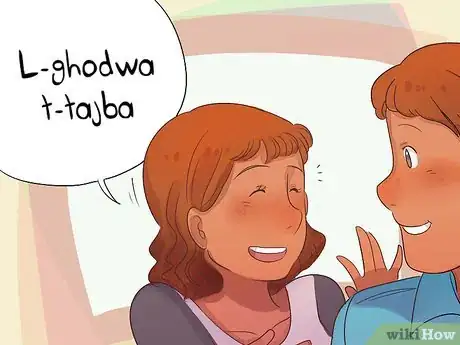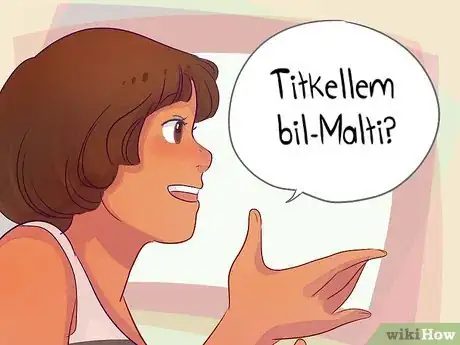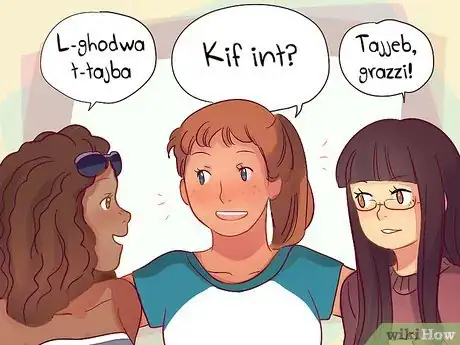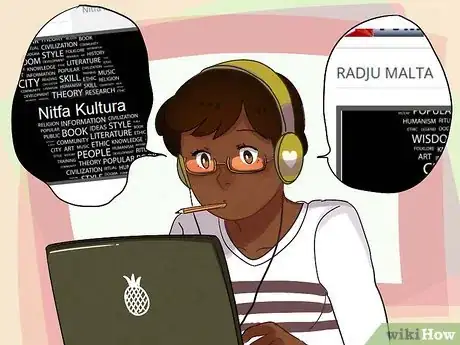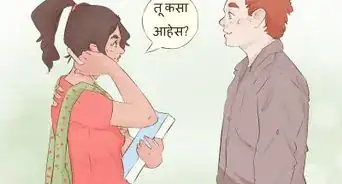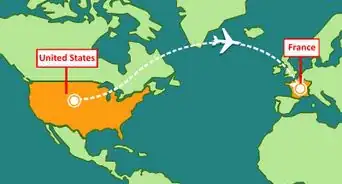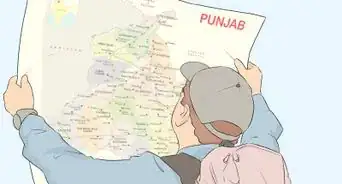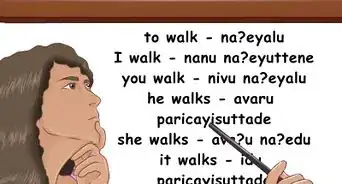wikiHow is a “wiki,” similar to Wikipedia, which means that many of our articles are co-written by multiple authors. To create this article, 28 people, some anonymous, worked to edit and improve it over time.
There are 7 references cited in this article, which can be found at the bottom of the page.
This article has been viewed 33,078 times.
Learn more...
Maltese (Lingwa Maltija) is the official language of Malta and an official language of the European Union. It is a Semitic language closely related to the Maghrebi Arabic dialects spoken across North Africa and is heavily infused with vocabulary from Italian, Sicilian, and English.[1] Although most[[Media:]] are fluent in English and Italian, knowing even a bit of Maltese will open you to the culture and history of Malta.
Steps
Learning the Maltese Alphabet and Pronunciation
-
1Learn the Maltese letters. The Maltese alphabet is similar to the English alphabet, but there are a few extra letters. In addition, some letters have markings on them that change their pronunciation. There are a total of 29 letters in the Maltese alphabet:[2]
- A a
- B b
- Ċ ċ
- D d
- E e
- F f
- Ġ ġ
- G g
- Għ għ
- H h
- Ħ ħ
- I i
- Ie ie
- J j
- K k
- L l
- M m
- N n
- O o
- P p
- Q q
- R r
- S s
- T t
- U u
- V v
- W w
- X x
- Ż ż
- Z z
-
2Learn how to pronounce the vowels. Each vowel has a long and short sound, similar to English vowels. Pronounce the vowels like this:
- A: A long “a” sounds like a in “far.” A short “a” sounds like “u” in “shut.”
- E: A long “e” sounds like the e in “shed.” A short “e” sounds like the ai in “hair.”
- I: A long “i” sounds like ee in “jeep.” A short “i” sounds like I in “fit.”
- O: A long “o” sounds like aw in “law.” A short “o” sounds like o in “got.”
- U: A long “u” sounds like oo in “fool.” A short “u” sounds like u in “full.”
Advertisement -
3Learn which letters make sounds similar to English. Many of the letters in the Maltese alphabet sound like their English equivalents. These letters include: B, D, F, G, K, L, M, N, P, S, T, V, and W.
- Ħ makes a sound like a regular H in English (as in “house”).
- Ż makes a sound like a regular Z in English (as in “fuzz”).
-
4Learn which consonant sounds are different from English. Several consonants in Maltese take on a different sound than its English equivalent. These include:
- C sounds like “ch” in “church.”
- Ġ sounds like “j” in “join.”
- H is silent if it’s in the middle of a word. If it’s at the end of a word, it sounds like the “h” in “hen.”
- J sounds like “y” in “yes.”
- GH is primarily silent and usually prolongs the sound of the vowel that it follows.
- R is trilled, similar to a Scottish or Spanish R sound.
- X sounds like “sh” in “sheep.”
- Z sounds like “ts” as in “hats.”
-
5Learn how to make a “Q” sound. A “q” in Maltese is pronounced with a glottal stop. A glottal stop is a sound that is made by completely closing the glottis (the area at the opening of the vocal cords at the top of the larynx) and then opening it up again. This is done very quickly.
- To do a glottal stop, speak the part of the word before the Q. Stop your air flow when you get to the Q (don’t pronounce the Q, of course), and then pick up the word again to pronounce the letters after the Q. This sounds similar to when a Scottish or Cockney accent speaks a word like “better” or “fitting.”
- Search online for audio examples of what a glottal stop sounds like.
Learning General Grammar Rules
-
1Learn how to use the article “the”. The definite article, “the” is “l-” in Maltese (the letter L with a hyphen). This construction is linked to the noun. For example, “l-orizzont” is “the horizon” in English.
- In cases where the noun begins with certain consonants, the article is “il-” instead. Examples are: il-mera (the mirror), il-qamar (the moon), and il-lapis (the pencil).
- In certain cases, the definite article matches the sound in words that begin with c, d, n, r, s, t, x, ż and z. Examples include: ic-circku (the circle), ir-rahal (the village), and it-tagen (the frying pan).
-
2Learn the gender of nouns. In Maltese, as in many other languages, certain words are masculine and others are feminine. Learn to distinguish between masculine and feminine nouns, which will also affect the formation of adjectives to describe these nouns. You can also tell whether an adjective is masculine or feminine with the same rules.
- Masculine words: nouns and adjectives that end with a consonant or with “u.” Examples are glekk (coat), ktieb (book), and seklu (century). There are a few exceptions, including triq (street), dar (house) and galb (heart).
- Feminine words: nouns and adjectives that end in “a” or “i.” Examples are mejda (table), helwa (sweet), arti (art) and fidi (faith). Exceptions include ilma (water) and papa (Pope).
-
3Learn how to make feminine adjectives. Adjectives in their masculine form need a slight change to make them match feminine nouns. Typically, add “a” to the end of the masculine adjective. If the adjective ends in “i,” add “ja” to make it feminine.
- For instance, tifel franciz (a French boy) becomes tfajla franciza (a French girl).
-
4Learn how to respond in the negative. To make a phrase using “not,” add “ma” before the verb and add “x” at the end of the verb. When the verb ends with an “a,” change the “a” to “iex.” For example:
- “Kiel” (he ate) becomes “ma kielx” (he didn’t eat).
- “Hija” (she is) becomes “mhijiex” (she isn’t).
- “Dhalt” (I went in) becomes “ma dhaltx” (I didn’t go in).
Learning Key Phrases
-
1Speak with good manners. Learn words like “please,” “thank you,” and other phrases that will show Maltese speakers that you’ve learned good manners.[3] These include:
- Please: Jekk jogħġbok
- Thank you (very much): Grazzi (hafna)
- Excuse me: Skuzi
- I’m sorry: Skuzani
-
2Learn how to greet someone. When you encounter someone who speaks Maltese, you can surprise them with knowing how to greet them.[4] These include:
- Hi: Hello
- Good morning: L-ghodwa t-tajba, or Bonġu
- Good evening: Wara nofs inhar it-tajjeb
- Good night: Il-lejl it-tajjeb
- See you later: Narak iktar tard
- Goodbye: Caw
-
3Learn to count to 10. Knowing how to count in Maltese will help improve your speaking skills, and you will be able to enumerate how much of something you’d like to buy, for example.[5]
- One: Wiehed
- Two: Tnejn
- Three: Tlieta
- Four: Erbgha
- Five: Hamsa
- Six: Sitta
- Seven: Sebgha
- Eight: Tmienja
- Nine: Disgha
- Ten: Ghaxra
-
4Learn some other key phrases. If you are traveling to Malta, you may want to try making conversation with a native Maltese speaker. Having a few extra key phrases under your belt will help start a conversation.
- Congratulations: Prosit
- Do you speak English (Maltese)?: Titkellem bl-Ingliz (bil-Malti)?
- What’s your name?: X jismek?
- My name is…: Jien jisimni…
- I don’t understand: Mhux nifhem
- I don’t know: Ma nafx
- Can you speak slowly?: Tista titkellem bilmod?
- How do you say “please” in Maltese?: Kif tghid “please” bil-Malti?
Practicing Maltese
-
1Take an online language course. There are a number of online language courses that provide instruction in Maltese. These courses provide video lectures and audio clips, written exercises and practice assignments. They range in price and length,
- Some courses are offered on DVD, with varying levels of complexity. Some give beginner lessons, while others give more advanced lessons.[6]
-
2Sign up for a language exchange program. Language exchange programs match you up with a native speaker of the language you are learning. This person is learning your language and is looking for someone to speak with. You will mutually help each other learn languages.[7]
- In language exchange programs, you can practice writing Maltese by sending emails. You can practice speaking Maltese by doing video chats.
-
3Find a conversation group. Depending on your location, you might be able to find a conversation group that meets regularly to speak in Maltese together. Maltese is not a widely spoken language, however, so this might be difficult to find.
- You can also advertise for Maltese conversation partners. You might find a native speaker in your city, or other people who are interested in speaking Maltese.
-
4Listen to Maltese radio online. Spend time on a regular basis listening to native Maltese speakers to get a good sense of what the language sounds like. You will soon be able to pick out words that you recognize and will begin to understand what the speaker is saying.
- Radio Malta is one option.[8] Search online to locate other radio stations based in Malta.
-
5Travel to Malta. The best and quickest way to learn a language is to fully immerse yourself in the country and culture. Spend time in Malta, meet people, and go to lots of different places. Practice ordering in a restaurant or asking for directions.
References
- ↑ http://www.visitmalta.com/en/language
- ↑ http://www.omniglot.com/writing/maltese.htm
- ↑ http://www.linguanaut.com/english_maltese.htm
- ↑ http://www.linguanaut.com/english_maltese.htm
- ↑ http://www.linguanaut.com/english_maltese.htm
- ↑ http://eurotalk.com/us/resources/learn/maltese
- ↑ http://www.mylanguageexchange.com/Learn/Maltese.asp
- ↑ http://www.tvm.com.mt/radio/radju-malta/

